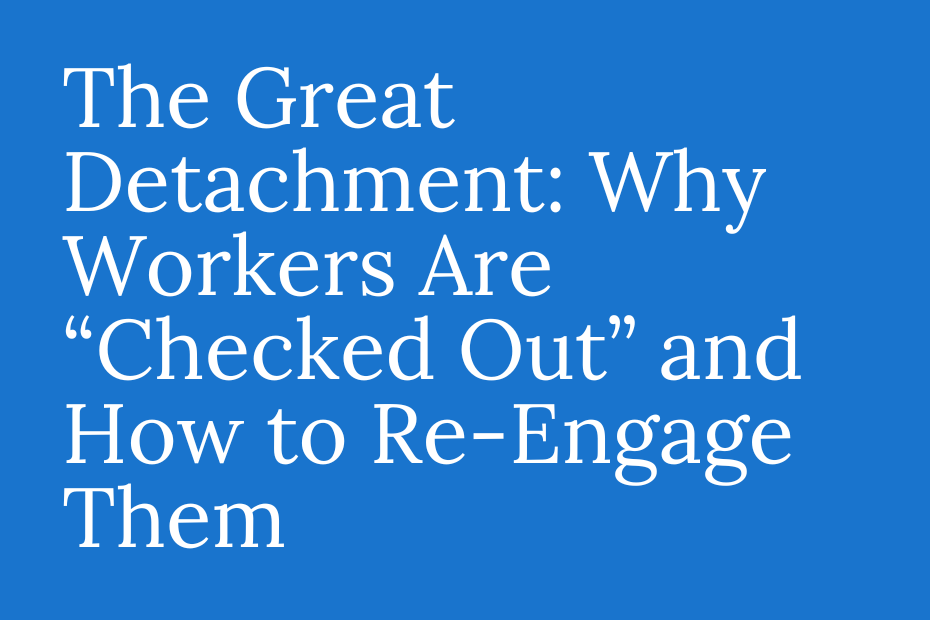The Great Detachment: Why Workers Are “Checked Out” and How to Re-Engage Them
We’ve all heard of the Great Resignation, but now there’s a new kid on the block: The Great Detachment. It’s not about quitting in droves anymore—it’s about sticking around but feeling completely disconnected from work. Picture employees who are physically present but emotionally absent, and you’ve got the essence of this phenomenon. So, what’s going on, and what can employers do about it?
What Exactly is the Great Detachment?
The Great Detachment refers to a growing trend where employees, bogged down by economic pressures and job dissatisfaction, are mentally checking out of their jobs. While they’re still punching the clock, they’ve emotionally disengaged, and that’s creating some serious challenges for businesses.
Why now? Well, after a frenzy of job-hopping during the Great Resignation, the cooling job market has left workers feeling a bit trapped. They might not be in love with their current job, but the economic uncertainty makes leaving feel like a gamble. And so, they stay—disengaged and disconnected (The Wealth Advisor).
What’s Causing This Disconnect?
It’s a mix of factors, really:
- Economic Concerns: With inflation and a less-than-booming job market, employees are hesitant to make career leaps. Even if they’re unhappy, they feel stuck, leading to disengagement (The Wealth Advisor).
- Poor Management: Lack of communication, limited feedback, and minimal recognition can make workers feel invisible. Almost half of those who quit last year said their employer could’ve kept them with better management. That’s a red flag for companies that haven’t yet adjusted their leadership styles (Personio).
- Remote Work Blues: Hybrid and remote work models have some undeniable perks, but they’ve also isolated employees, especially younger generations who’ve missed out on the in-office camaraderie and mentorship that can help build strong work relationships (HR Reporter).
So, What Can Employers Do to Turn the Tide?
If you’re a business owner or manager, you’re probably wondering how to prevent your team from drifting into the detached zone. Don’t worry—there are ways to reel them back in!
- Amp Up Communication: Open, two-way communication is key. Make sure you’re not just talking at your employees, but also listening to them. Giving them a voice in decisions and recognizing their contributions can reignite a sense of ownership and connection.
- Make Work Meaningful: No one wants to feel like just a cog in the wheel. Create opportunities for employees to understand how their work contributes to the bigger picture. Recognition and career development programs can do wonders for motivation (HR Reporter).
- Build a Strong Culture: Whether in the office or remote, fostering a sense of belonging is crucial. Organize team-building activities, celebrate milestones, and make time for employees to bond, even through virtual lunches or team challenges.
Delve deeper into improving workforce satisfaction with our recent white paper.
The Bottom Line
The Great Detachment is a trend that’s here, but it doesn’t have to stay. By prioritizing communication, recognizing employees’ hard work, and building a culture of inclusion, businesses can keep their teams connected and engaged. After all, a happy, engaged team isn’t just good for morale—it’s good for business too!







